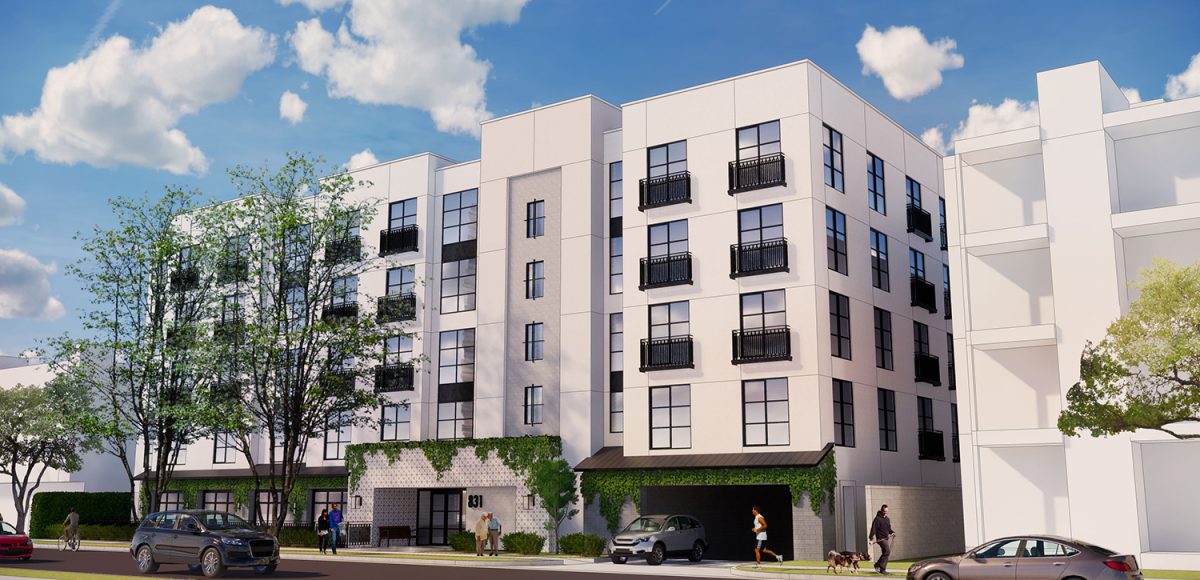A nearly year-long fight over a proposed eldercare facility development near La Cienega Park ended April 27 with a win for the developer. In an appeal hearing, the Los Angeles Central Area Planning Commission ruled that the 80-unit eldercare development could proceed over objections from neighbors, who took issue with the size of the 5-story project.
“We’re obviously satisfied–even thrilled–with the result. This project was approved, and we think it was approved for the right reasons,” Andrew Brady, an attorney representing the development, told the Courier. “We think that it was recognized by all parties, including the appellants, that there is a severe need for this kind of housing in this particular community, and the city as a whole.”
The project site consists of three lots on the west side of Holt Avenue between Gregory Way and Olympic Boulevard. Currently, three two-story duplexes are on the property, but will be demolished to make way for the 57,000-square-foot eldercare facility. The project will serve both assisted living and memory care, residents with Alzheimer’s and Dementia. The plans indicate that 62 units will be for assisted living and 18 for memory care.
Though some neighbors spoke out against the use of the property, arguing that eldercare facilities should be in commercial zones, most locals took issue with the scale of the development.
“We all feel very similar that elder care is extremely important,” Nikki Vescovi told the Courier. Vescovi, a local of 22 years who lives across from the project, presented her arguments at the hearing. “It’s incongruent and not in keeping with the community envelope.”
The development asked for numerous deviations from the Los Angeles Municipal Code, using incentives offered to eldercare projects. An ordinance passed by the City of Los Angeles in 2003 and amended in 2006 allows eldercare facilities to exceed density requirements if the project meets certain findings.
The ordinance sprang out of the recognition that the city had fallen behind on the infrastructure necessary to support an aging population. The city reaffirmed the urgency of developing senior supportive housing in its most recent Housing Element’s Housing Needs Assessment, noting that “the number of ‘new seniors’ (from 2000 to 2010) increased faster in the Los Angeles region than New York or any other metropolitan area.”
Without the deviations, the municipal code would only allow for 36 guest rooms and a height of 45 feet, as opposed to its planned 80 guest rooms at a height of 58 feet. In order to receive the necessary entitlements, a City Planning Zoning Administrator had to make five findings: the facility will not be “materially detrimental or injurious” to surrounding properties; it will provide services to the elderly; will not adversely impact street access or circulation; will be compatible with “existing and planned future development on neighboring properties”; and complies with the General Plan.
In February, the Zoning Administrator found that the proposal satisfied all five findings and approved the deviations. Shortly afterwards, three neighbors filed appeals that the Central Area Planning Commission heard on April 27.
Vescovi, one of the appellants, argued to the Commission that Holt Avenue has no other 5-story buildings between Olympic Boulevard and Gregory Way and that 90 percent of the structures on Holt are 2-stories or less. In her presentation, she said that City Councilmember Paul Koretz recommended the project be denied on account of its mid-block location, excessive height, reduced yards, and lack of a loading zone.
The developer had added a loading zone and adjusted certain setbacks subsequent to Koretz’s objections, which were made in an October letter by Senior Planning Deputy Daniel Skolnick to the Zoning Administrator. But even with the concessions, the height remained a sticking point. According to Brady, without the fifth floor, the project would not be financially viable.
Ultimately, the Commission sided with Brady and his client, Danny Kianmahd. Out of the 29 public comments made in the hearing, 27 were in support of the project–a mix of doctors, pharmacists, eldercare operators, and gerontologists who spoke on the need for more eldercare facilities. Kianmahd said that he expects shovels to be in the ground by the second half of next year.
When asked what Vescovi’s intentions were going forward, she said, “I think we will continue to pursue all options. I’ll just leave it at that.”







